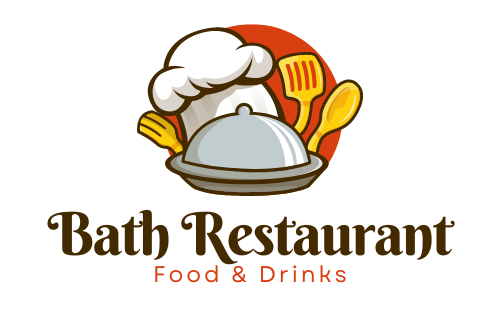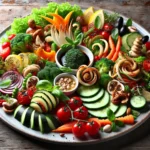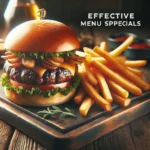Analyzing the Influence of Menu Specials on Restaurant Revenue
Menu specials play a crucial role in driving restaurant sales and revenue. Analyzing the impact of menu specials on restaurant revenue provides valuable insights into consumer behavior and preferences. By strategically designing and promoting menu specials, restaurants can significantly boost their sales and overall profitability.
When analyzing the influence of menu specials on restaurant revenue, it is essential to consider several key factors. Firstly, the selection and pricing of menu specials can greatly impact their success. Offering unique and desirable dishes at an attractive price point can attract more customers and drive incremental sales. Additionally, the placement of menu specials on the menu can influence their sales performance. Highlighting specials using visual cues or placement in prominent areas of the menu can draw diners’ attention and increase orders.
Moreover, tracking the performance of menu specials over time is crucial for analyzing their impact on restaurant revenue. Understanding which specials resonate with customers and drive sales can inform future menu planning and promotional efforts. By leveraging sales data and customer feedback, restaurants can refine their specials strategy to maximize revenue generation.
In conclusion, analyzing the influence of menu specials on restaurant revenue is a multi-faceted process that encompasses menu design, pricing, placement, and performance tracking. By carefully evaluating these aspects, restaurants can optimize their menu specials to drive sales and enhance overall revenue.
Implementing Effective Menu Specials to Boost Restaurant Profits
Implementing effective menu specials can have a significant impact on restaurant profits. By strategically designing and promoting enticing specials, restaurants can attract more customers and encourage higher spending, ultimately boosting overall sales. When planning menu specials, it is crucial for restaurants to consider factors such as seasonality, customer preferences, and cost-effectiveness.
One effective strategy for implementing menu specials is to align them with seasonal ingredients or holidays. By featuring dishes that incorporate fresh, in-season produce or that are themed around a particular holiday or event, restaurants can capitalize on heightened consumer interest and demand. This not only creates a sense of novelty and excitement for diners but also demonstrates the restaurant’s commitment to offering fresh and relevant menu options.
Additionally, understanding customer preferences and purchasing behaviors is essential for developing menu specials that resonate with the target audience. Analyzing sales data and gathering customer feedback can provide valuable insights into which types of specials are likely to be well-received. Whether it’s a limited-time promotion on a popular menu item or a creative new dish designed to cater to evolving taste trends, tailoring specials to align with customer preferences can drive increased sales and customer satisfaction.
Cost-effectiveness is another critical aspect to consider when implementing menu specials. While it’s important to offer attractive and innovative specials, it is equally vital to ensure that the specials are financially viable for the business. By carefully analyzing food costs, profit margins, and potential sales volume, restaurants can determine which specials offer the best balance of appeal and profitability. This allows for the creation of specials that not only entice customers but also contribute positively to the restaurant’s bottom line.
In conclusion, implementing effective menu specials is a strategic way for restaurants to boost profits and drive sales. By aligning specials with seasonality, understanding customer preferences, and ensuring cost-effectiveness, restaurants can create a compelling and financially rewarding special menu that resonates with customers and contributes to overall business success.
The Science Behind Menu Specials: Maximizing Restaurant Sales
Menu specials play a crucial role in influencing restaurant sales, as they are strategically designed to attract customers and maximize revenue. The science behind menu specials involves a deep understanding of consumer psychology and purchasing behavior. By leveraging key principles of consumer decision-making, restaurants can effectively design menu specials to drive sales and enhance the overall dining experience.
One of the fundamental aspects of the science behind menu specials is the concept of anchoring. This principle suggests that customers tend to rely heavily on the first piece of information they receive when making decisions. By strategically placing high-profit items or popular specials at the top of the menu, restaurants can influence customers’ choices and increase the likelihood of upselling.
In addition, the psychology of pricing plays a significant role in the success of menu specials. Techniques such as charm pricing (setting prices just below a round number, e.g., $9.99 instead of $10) can create a perception of a better deal and entice customers to make a purchase. Furthermore, creating a visual distinction for specials, such as using a different font or highlighting them in a box, can draw attention and lead to increased sales.
Understanding the science behind menu specials enables restaurants to strategically design their menus to drive sales and enhance the overall dining experience for customers. By implementing these key principles, restaurants can effectively influence consumer behavior and maximize revenue through well-crafted menu specials.




